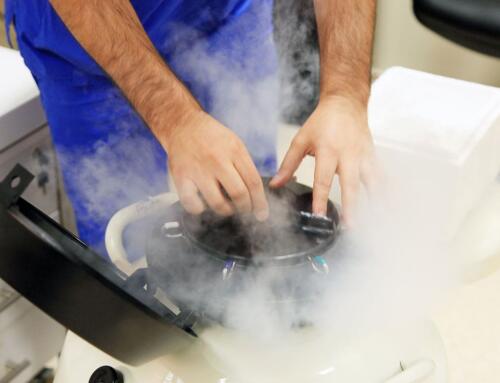Determining the optimal moment for the endometrium to allow embryo implantation is arguably one of the most crucial stages in assisted reproduction treatments involving IVF.
While theoretically, in a “normal” natural menstrual cycle with ovulation occurring on day 14, embryo transfer should take place between days 18 and 21, these timings can vary depending on individual factors for each woman.
In fact, the so-called “endometrial receptivity” is a gradual process during which the endometrium transitions from non-receptive to pre-receptive, receptive, post-receptive, and back to non-receptive, conditioned by hormonal, endocrine, inflammatory, or immunological factors.
Why is understanding endometrial receptivity crucial in IVF treatment?
The endometrium undergoes many changes throughout the menstrual cycle.
For instance, immediately following menstruation, this inner lining of the uterus is smooth and poised to expand in size.
During the “proliferative phase,” estrogen prompts cell release, increasing the endometrium’s thickness, blood vessel network, and exocrine gland activity.
Right after ovulation, the endometrium adopts a trilaminar appearance (secretory phase) reaching its peak receptivity.
At this point, the endometrium has the thickness and nutrients necessary for proper interaction with the embryo, for placental development, and consequently, supporting a viable pregnancy.
Outside of this phase, even embryos of high quality struggle to adhere to the endometrium.
How can one ascertain endometrial receptivity? Is it quantifiable?
Several methods exist to determine endometrial receptivity:
Ultrasound
For ideal implantation, the endometrium should measure between 8 and 12 mm, exhibiting a “trilaminar” appearance.
Endometrial thickness can be measured using standard transvaginal ultrasound.
Magnetic Resonance Imaging (MRI)
MRI is a technique for careful radiological exploration and interpretation, very common in gynecological examinations to assess the state of the endometrium.
In fact, it is one of the techniques used for the diagnosis of endometriosis.
MRI provides more precise and comprehensive results than ultrasound regarding the state and appearance of the endometrium, including its thickness, appearance, or possible alterations that could affect receptivity.
Diagnostic Hysteroscopy
Hysteroscopy allows direct visualization of the cervical canal and uterine cavity, facilitating morphological and functional study of the endometrium.
This technique involves inserting a lens (hysteroscope) through the uterine cervix to visualize the uterine cavity.
Blood Analysis
During IVF treatments, prospective mothers undergo frequent blood tests to monitor their hormonal levels.
Progesterone and estrogen levels are indicative of endometrial receptivity and can indicate the best time for embryo transfer.
Study of Previous Cycles
In addition to the above techniques, in our clinic, we take into account the timing of “natural” ovulation or when the patient underwent ovum retrieval after ovarian stimulation.
Considering this data, alongside other techniques to assess endometrial shape and thickness or the results obtained in previous cycles, we determine the moment of maximum endometrial receptivity and, therefore, the highest chances of successful implantation.
What to do in case of low endometrial receptivity?
In instances of low endometrial receptivity or non-receptive endometrium, we employ innovative and pioneering techniques such as Revitalize Uterus. Let us explain what it is!
Revitalize Uterus
Low endometrial receptivity may indicate abnormalities in the uterine cavity (polyps, fibroids, etc.), infectious processes, “refractory endometrium,” genetic alterations, systemic immunological diseases, or “dialogue” incompatibility between the embryo and endometrium due to morphological and functional reasons that hinder pregnancy and are synonymous with infertility.
At Equipo Juana Crespo, we conduct a thorough study of each woman/couple and perform the necessary diagnostic tests to establish the most suitable treatment in each case.
Thanks to the stimulation of stem cells and the administration of Platelet-Rich Plasma through puncture, Revitalize Uterus enhances vascularization and the action of growth factors (PRGF) so that the subendometrial stem cells function better.
Depending on each woman, Revitalize Uterus may include:
- Pharmacological treatment to enhance and mobilize stem cells.
- Administration of PRGF via hysteroscopy.
- Highly personalized endometrial preparation.
The result of this comprehensive technique is a more functional endometrium, with fewer inflammatory lesions, and an improvement in the embryo implantation process.
To date, with Revitalize Uterus, we have achieved very good results in patients with minimal or absent endometrial growth, reaching optimal endometrial receptivity for embryo implantation.
If you have any doubts, feel free to write to us or call us. We specialize in cases of highly complex assisted reproduction.
















